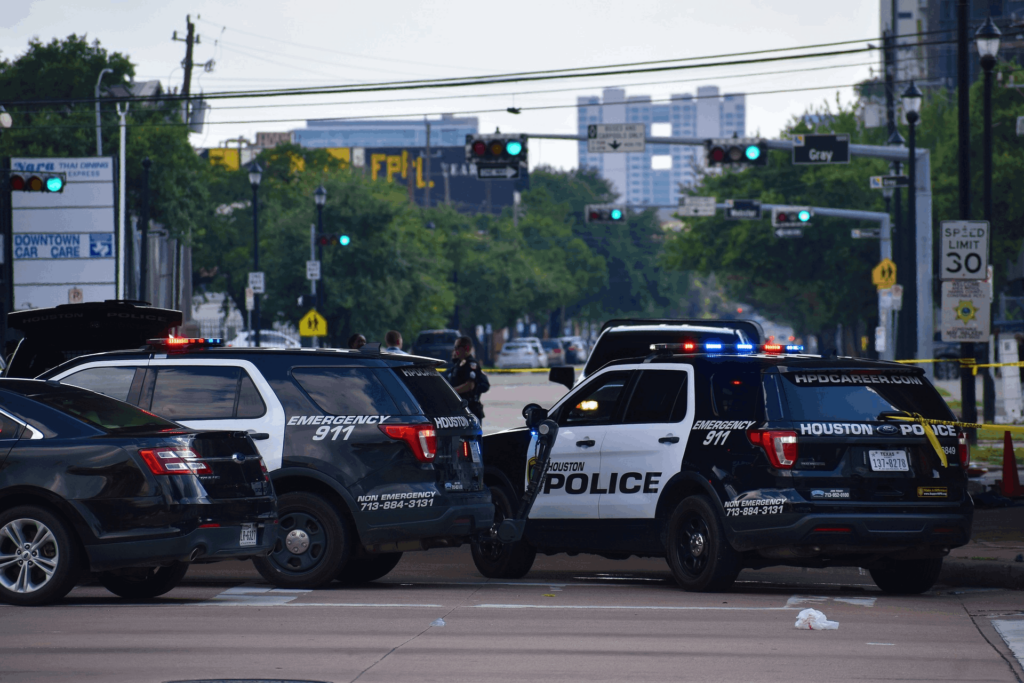In 2021, there were no days in Texas that did not record a fatal auto accident. The state logged at least 4,489 fatalities and 19,448 people with severe injuries.
Suppose a motorist is involved in a car accident. They can usually do one of two things. They can either file an
Currently, 12 states have implemented the no-fault
Meanwhile, Washington, DC, and the remaining states implement a fault system. Texas is one of these fault or tort states.
These principles are vital in determining who is liable for damages and injuries in an auto accident. Similarly, they influence the number of accident lawsuits and how efficiently individuals recover compensation for their losses.
Regardless, motorists can file an
Key Takeaways
|
Fault vs. No-Fault States
In the US, states can either be fault or no-fault
In a tort or at-fault state, the motorist who causes the auto accident is liable for paying the other party for their losses. The majority of states utilize this auto
For instance, you caused a crash that resulted in property damage and bodily injuries to another party. The injured party can file a claim with your liability
In general,
On the other hand, no-fault states allow motorists to pursue a claim with their own
Typically, no-fault states bar injured victims from pursuing a car accident suit unless they meet an injury or monetary threshold. These strict thresholds aim to minimize costly litigation that often drains the resources of all parties involved.
However, no-fault states still assign liability to motorists. Additionally, no-fault or personal injury protection (PIP)
Suppose you were in an auto accident in a no-fault state. Then the
However, this coverage does not compensate for vehicle damage. The at-fault driver may be liable for car repairs, for which they can use their liability
Texas Is a Fault State
The state of Texas follows a fault-based
Texas law requires motorists to prove they can pay for any accident they may cause. Most drivers do this by carrying auto liability
As a requirement, motorists must carry the minimum coverage of at least:
- $30,000 for physical injury or death of one person in one event
- $60,000 for physical injury or death of two or more persons in one event
- $25,000 for property damage or destruction of others in one event
Suppose an uninsured driver causes a car crash. In that case, they must be personally responsible for paying damages to the other party.
Types of Auto Insurance Policies in Texas
Insurance companies in Texas offer eight types of coverage. These coverages are liability, collision, comprehensive, medical payments, personal injury protection, uninsured motorist, towing and labor, and rental reimbursement.
The state only requires liability
However, most policies do not cover the following scenarios:
- The policyholder renders paid ride-hailing or food-delivery services.
- The policyholder operates in Mexico
- The policyholder races or drives for business.
- The policyholder causes intentional damage to their vehicle.
Additionally, car
Liability insurance
Liability
Suppose you are liable for the auto accident. Then the bodily injury liability covers costs related to physical injuries or death of the other party. On the other hand, property damage liability helps cover expenses for destroying another party’s property.
Texas allows motorists to purchase higher liability coverage than required. It ensures they can pay off damages if they cause a multi-vehicle accident.
Personal injury protection
Personal injury protection or PIP coverage is like medical payments coverage. Both pay for the policyholder’s and their passengers’ medical bills. However, unlike the medical payments coverage, it also pays for lost income and other non-medical costs.
PIP typically covers medical costs such as hospital and doctor’s bills, physical therapy, and rehabilitation. Sometimes, it can also provide for other relevant expenses like transportation to medical appointments.
Usually, auto
Collision insurance
Collision coverage would pay for the policyholder’s vehicle repair or replacement if they caused an auto accident. As its name implies, collision
Usually, collision
- Collision with another car
- Collison with an object, such as a tree, guardrail, or fence
- A single-vehicle accident, such as a rollover
Collision coverage generally reimburses the policyholder for car accidents they did not cause. It covers incidents out of a driver’s control, such as driving over potholes or other road hazards.
Comprehensive insurance
Comprehensive insurance covers damage to vehicles due to anything other than collisions. One example is when a tree branch falls on your car, breaking the windshield. In general, this coverage is an add-on and optional. You can use it to support other
Comprehensive auto
- Theft
- Vandalism
- Hail
- Windstorms
- Fire
- Flying or falling objects
- Windshield damage
- Earthquakes
Usually, leasing companies require clients to purchase comprehensive
Uninsured/underinsured motorist protection
Suppose the at-fault party in a car accident does not carry liability
Texas does not require this coverage. However, this
Like personal injury protection coverage,
How Texas Determines At-Fault Parties in Motor Vehicle Accidents


In car accident cases, it is essential to have systems in place to designate liability. It dictates which party pays for injuries and damages concerning the accident. Depending on the case, various parties may be responsible for the incident.
In some cases, two parties may share liability for the auto accident. In an event like this, Texas state follows comparative negligence rules.
Comparative negligence reduces a plaintiff’s compensation in negligence claims such as car accident cases. Courts employ this principle and award compensation proportionate to the negligence each motorist contributed to the incident.
In the US, states may implement one of three negligence rules: contributory negligence, pure comparative negligence, and modified comparative negligence.
States that follow contributory fault are the strictest of all. Suppose the court finds the plaintiff contributed to the incident by at least one percent. Then they bar the plaintiff from recovering any damages.
Only the District of Columbia and four other states implement this rule: Alabama, North Carolina, Maryland, and Virginia.
Under pure comparative negligence rules, the court allows the plaintiff to pursue damages regardless of how much they contributed to the incident.
For instance, the court determined the plaintiff is liable for 99 percent of the crash. Then the plaintiff may still recover one percent of the damages.
Texas implements modified comparative negligence rules. Under this principle, plaintiffs may recover damages under one condition. The court must determine their liability for the accident is less than 50 percent. Most states follow this rule, including Colorado and Utah.
How To Establish Fault in a Car Accident
Establishing fault is crucial when filing a car accident case. Most of the time, the initial steps you take after a car accident make or break your claim. You may follow this guide to know what you can do immediately after a car accident:
- At the scene of the accident: Immediately call the police and obtain a copy of the police report. Often, the police report details the elements of the accident scene and provides the officer’s opinion regarding who was liable for the incident. While at the accident scene, take the time to collect the other party’s information. Request their name, contact information,
insurance company, and policy number. You can also take a photo of their driver’s license andinsurance card. - After getting home: Immediately contact your
insurance company and report the incident. When the company assigns aninsurance adjuster for your case, you can also request their contact details. Suppose you went to seek medical treatment. Keep all medical bills and records if yourinsurance company asks for them. - Repairing your car: Usually, your
insurance company will provide you with a list of body shops to choose from and give you a repair estimate. If it costs more to fix your vehicle, the body shop will provide yourinsurance company with an appraisal. When your company agrees with the estimate, they will pay for the extra repairs. - The other motorist was at-fault: You can report the auto accident to the at-fault driver’s
insurance company. Theirinsurance policy should reimburse your vehicle repair costs and medical bills.
The at-fault motorist does not have
Did you know?
You violate Texas law if you do not have auto insurance and get in an auto accident. The police officer may issue a ticket and fine you up to $350. If it happens again, you may be subject to a $1000 fine and a suspended driver’s license.
Book a Free Consultation With a Car Accident Lawyer
Texas recognizes a fault
When this happens, seeking legal representation from a personal injury lawyer is advisable. The Personal Injury Center can provide access to a network of Texas lawyers specializing in car accident cases.
You can also browse their legal articles to learn about Texas fault laws and how to file a car accident claim successfully.
Let a personal injury lawyer handle your car accident case. Contact The Personal Injury Center to find an attorney for you.
FAQs on Texas Being a No-Fault State
If a friend borrows my car and gets in an auto accident, will my policy cover their injuries?
Generally, your policy will still cover their injuries under two conditions. One is you gave your permission to use the car. The other is your friend has a valid driver’s license.
However, if your friend is a long-term user and not named in your policy, your insurer might refuse to pay for damages. It is also the case for employees who drive company-owned vehicles. Check your policy for restrictions for letting other people use your car.
Do I need to get insurance for my moped or motorcycle?
Yes. Texas requires all drivers, including motorcyclists, to carry liability insurance for accidents they may cause.
How soon can I file an auto insurance claim in Texas?
Accident victims must file personal injury claims, such as car accident cases, within two years of the incident.



